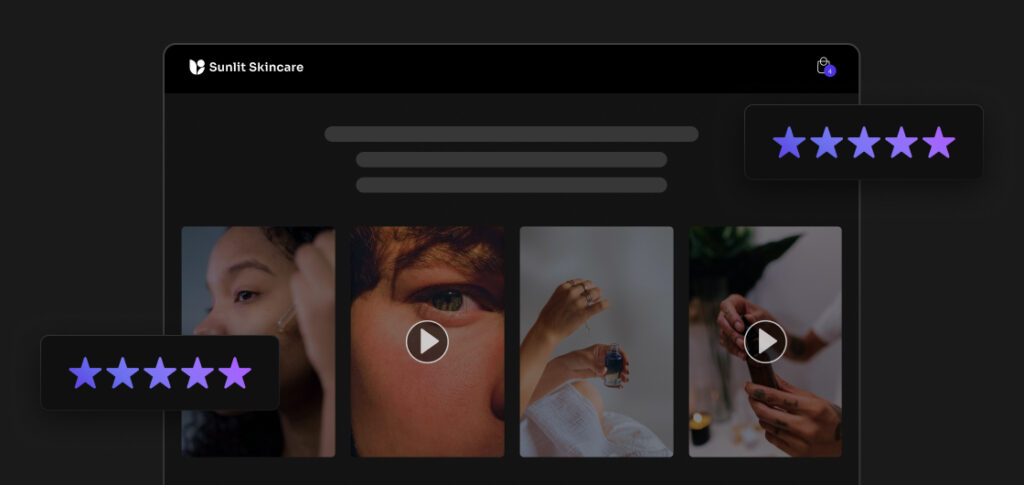
- Customer Marketing
- Reviews and UGC
- Social Proof
How To Add Social Proof on Shopify
Katie Vaught | Apr 25, 2025
Sep 20, 2024 | 9 minute read
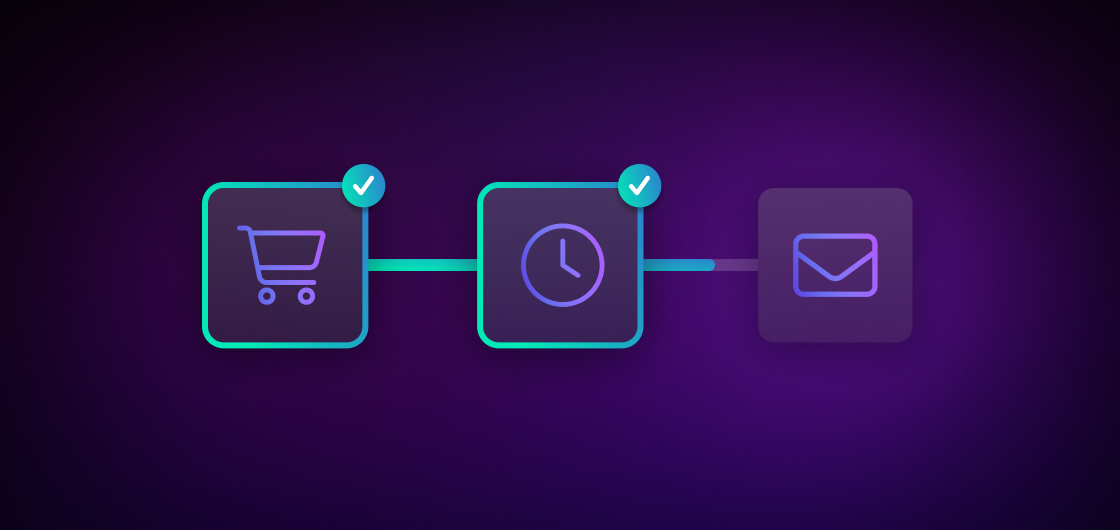
Matt Goodman
Co-founder, CEO
Brands require round-the-clock marketing efforts—that’s where ecommerce marketing automations come into play. These include personalized email onboarding journeys, customer reviews and UGC automation, loyalty programs, automated abandoned cart reminders, social media and search ad remarketing, using quizzes for personalization, on-site personalization to enhance user experience. Read on for explanations of how to utilize each.
Unlike traditional brick-and-mortar stores, ecommerce brands are theoretically open 24/7, meaning that at any given moment, they must be functioning and prepared to meet paying customers’ needs. While physical store locations only need personnel during operating business hours, an online store must rely on constant monitoring and reaction to business needs.
This is where ecommerce marketing automation comes into play. Ecommerce marketing automation involves setting up tasks, parameters, rules, dynamic content, or strategies that help online stores run smoothly even without a manager present. Ecommerce marketing automation is critical to maintaining operations and driving revenue for a round-the-clock ecommerce business.
In this guide, we’ll discuss the six best ecommerce marketing automation strategies for helping your brand run like a well-oiled machine even beyond normal business hours.
Ecommerce automation not only assures business owners that operations will remain intact even without constant monitoring or manual intervention, but also improves the ecommerce experience for customers. Unlike with physical stores, automation practices allow an ecommerce site to constantly adjust the experience, incorporate personalization, and dynamically react to trends or business needs.
With physical stores, all updates to displays, promotions, pricing, and assortment require manual efforts, manpower, and time. Online brands, on the other hand, have the unique ability to automate all routine but necessary processes to keep the experience fresh and engaging thereby improving customer relations. Further, with personalized automation processes, customers can receive a tailored experience that they would otherwise be unable to experience in a physical store.
Erin DeCesaris, Ecommerce Growth Strategist at Fuel Made says, “Automation isn’t just about saving time (and headaches) – it’s a key for growth. By marrying automation with analytics, you’re able to deliver personalized experiences that customers love, while store owners gain the insights they need to make smarter, data-driven decisions.”
Ecommerce marketing automation strategies can be incorporated into most areas of the customer shopping journey. Consider employing some of these practices into your store experience for seamless operations, improved customer engagement, and practical safeguards for driving revenue.
When customers sign up to receive your brand’s marketing emails or newsletters, the expectation is they will receive prompt communication confirming their enrollment and even marketing or branded content straight away.
This point in the customer journey is the perfect time to engage shoppers, inform them about the brand, products and services, and create a seamless customer experience. Because customers are opting to receive the brand’s spiel, this is your brand’s chance to incorporate brand storytelling and personalization to drive conversions.
Because attention spans are short, however, prompt and relevant communication is vital to email onboarding success. This is an excellent part of the journey to incorporate marketing automation to ensure a quick confirmation email is sent directly after sign-up, personalized discount offers are fed into the email message, and individualized product recommendations or brand content is added to the creative of the email flow. After customers’ interaction (or non-interaction) with the first email, the welcome campaign can send further communications to engage or re-engage the new customers based on their behaviors.
Running an effective reviews and UGC program can involve many repetitive tasks that are both time-intensive and tedious. Reviews with user-generated content, however, add significant value to the customer’s shopping experience and thereby represent revenue-driving potential.
To ensure reviews and UGC are incorporated into the site experience efficiently and effectively, use marketing automation to collect or request content from customers, moderate and monitor for errors, and periodically add reviews and UGC to relevant areas on your store where customers can easily view and digest them.
Okendo Reviews automates brands’ reviews and UGC processes from end to end. It allows brands to send out automatic review requests triggered at the point of purchase, request additional personalization content to enrich review quality and information, leave the bulk of moderation to automatic publishing and sentiment analysis, and create visually appealing UGC displays that are both on-brand, easily digestible, and relevant to the customers shopping experience.
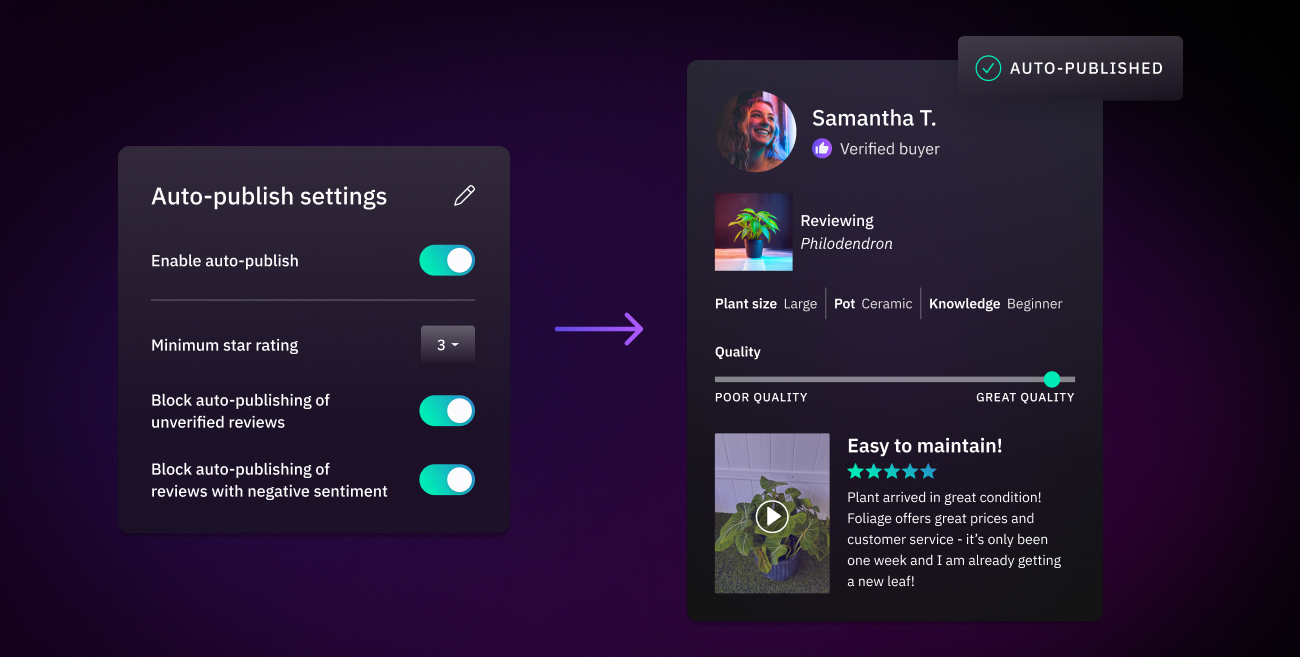
Similar to reviews and UGC, awarding customers rewards as part of a loyalty program can be both time-intensive and repetitive, but also represents significant value for the customer and sales potential for the brand. To best streamline the routine processes for tracking points and distributing rewards as part of a loyalty program, marketing automation strategies are key.
Brands can best run a loyalty program by incorporating automation into tracking customers’ points balance, sending automated communications when customers reach loyalty milestones (such as reaching a new loyalty tier or earning a reward), and for communicating personalized loyalty perks such as exclusive events or product launches.
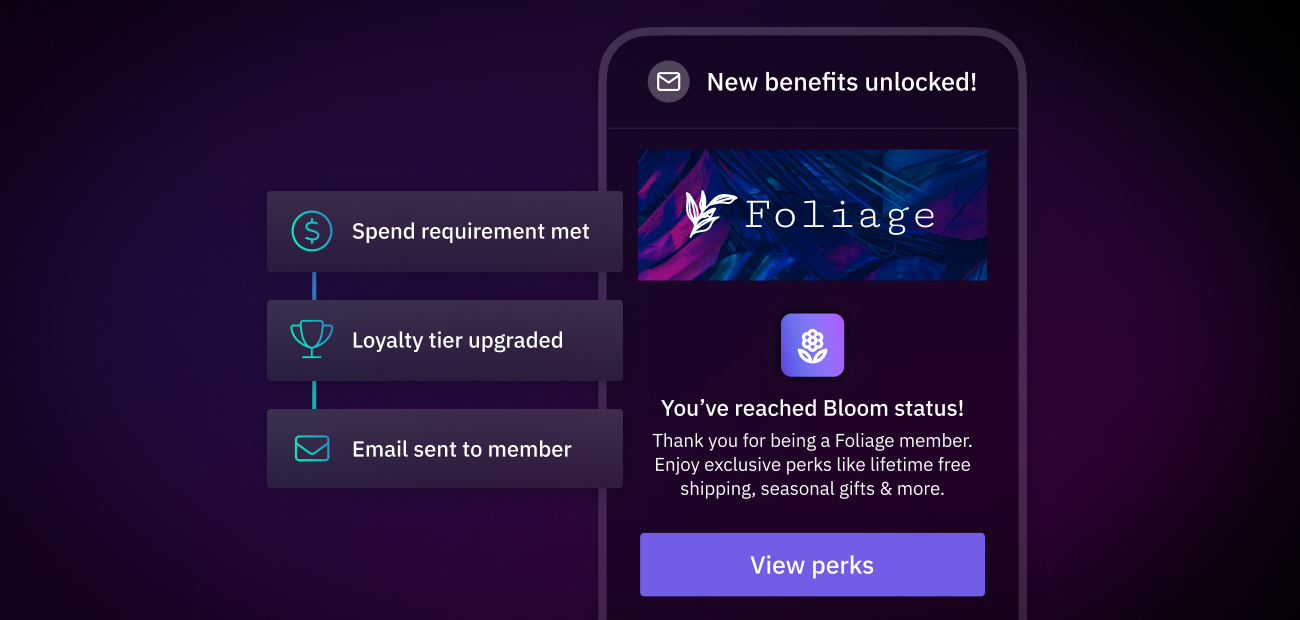
With Okendo Loyalty, brands can automatically recruit new loyalty members, track and distribute points, maintain customer profiles, and notify customers of perks, earned rewards, and discounts as they engage in activities to earn rewards or reach new tiers. Okendo Loyalty also streamlines the data analytics process with a live reporting dashboard tracking sign ups, ROI, and outstanding reward values, and by automatically saving customer data to a single unified profile.
Customers who add a product to their cart show a high level of purchasing intent and are far more likely to ultimately make a purchase than customers further up the purchase funnel. For this reason, an effective cart abandonment process can significantly improve conversion rates by re-engaging customers most likely to make a purchase.
Brands can automate abandoned cart email reminders in several ways. An exit intent campaign can prevent potential customers from abandoning carts in the first place with an automated pop-up triggered by the customer’s cursor hovering over the browser’s X button. If a customer still decides to end a browsing session after adding a product to cart, an automated flow can be set up to email or text the customer with a reminder of what was left in the cart and a discount offer to incentivize the abandoned purchase. The email or SMS flow can automatically send out further communications depending on the customer’s behavior post-abandonment.
Product recommendation quizzes are a way to communicate with the customer, provide an entertaining experience, enhance product discovery, and collect first-party data. Quizzes allow brands to not only engage the customer but also to help understand them better to improve the customer experience in the long run.
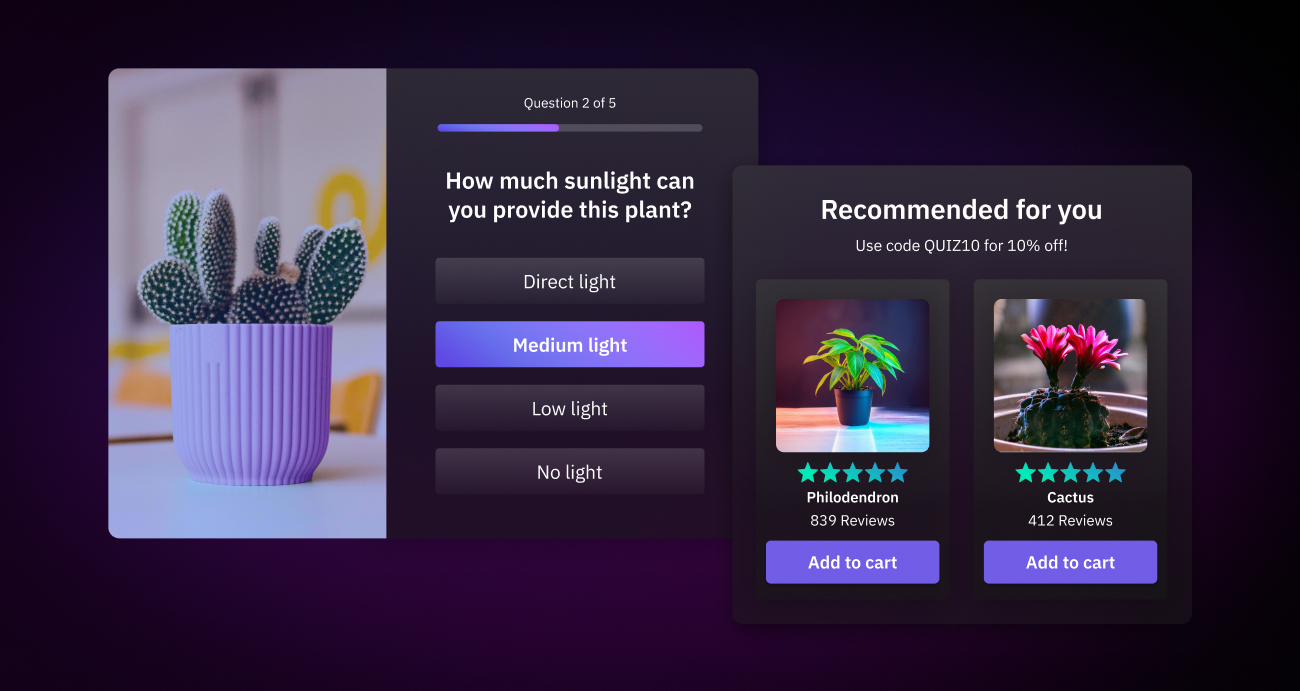
Fortunately, quizzes are an element of a website that can run automatically and without much manual work to maintain their effectiveness. With Okendo Quizzes your brand can help customers find products they love while maximizing conversions and driving engagement. Okendo Quizzes are fully customizable with the option to use generative AI to allow easy quiz set up. Employing quizzes on the site would be an engaging way to incorporate marketing automations and to create an enjoyable customer experience quickly.
Especially for brands that have a robust audience or large customer base, personalization is important to make the online shopping experience feel tailored rather than one-size-fits-all. With automations, brands can sometimes drift toward treating all customers the same to save time or manpower. Personalization, however, is a way to combat this effect.
With personalization, brands can effectively employ automations while also enhancing the customer experience. Personalization can be incorporated into virtually every aspect of the customer experience, but in order to conserve resources, brands should focus on the areas where it has the greatest impact.
Consider incorporating personalization at the point in the funnel where you notice a steep drop off in conversion rates. This could be when customers visit a certain landing page, utilize onsite search, select a specific PDP, add products to their cart, or interact with other onsite content. Once you identify where opportunity for personalization exists, start by analyzing customer behavior and whether certain customer cohorts behave differently at these points along the journey. This will help guide the roadmap for how you can tailor the experience and thereby preserve conversion rates and thereby automations.
Personalization can also be an automatic process. Recommendation widgets, merchandising sequences, pop-ups, onsite content, and even copy can all be personalized without much manual intervention to tailor the experience for customers. The work in setting up personalization is mostly frontloaded, and then once it is set up, personalization represents a long-term, revenue-driving strategy.
When employing automation in your brand’s processes and operations, choosing the right tool that will integrate well with your existing systems is vital to success. When an automation tool does not have strong communication with other tools or systems, the automation’s effectiveness can be severely hindered.
Automation marketing relies heavily on the inputs, parameters, and settings put in place. To ensure you are selecting the right tool, consider how the automation tool digests information and responds to inputs. Having a thorough understanding of what makes the tool tick will not only make your team more efficient in setting up the automations and troubleshooting any issues, but will also help the tool run more effectively and optimize its impacts on your customer shopping journey (and thereby revenue).
Compatibility with other tools in your tech stack is also key. When an automation tool does not have partnerships or turnkey integrations in place with other tools, sometimes retaining an automation tool can create more work rather than save work. You should also consider the ROAS in retaining an automation tool and whether the cost of a software is more than offset by the amount of incremental revenue it contributes to your brand’s success.
With Okendo’s full suite of products, your brand can employ marketing automation where they are needed most for long-term revenue gains and workload reduction. Okendo is the solution to easily enhance the shopping journey.
Okendo Loyalty offers a tiered, fully customizable solution for improving customer relations, automatically distributing points and rewards, and tracking data analytics and customer behavior. Solutions such as Okendo Quizzes and Okendo Surveys can help the brand collect zero-party data, glean insights about the customer, and thereby optimize the automatic personalization efforts on their online stores. For a fully customizable and automatic reviews and UGC product, Okendo Reviews helps brands manage a key element to any brand’s effectiveness, conversion rate optimization, and strong customer relations.
Brand managers of Shopify stores are in a unique position of running a business that never closes. With this comes the constant pressure to keep the operations running smoothly 24/7, to monitor sales around the clock, to ensure the customer experience is always enjoyable and engaging, and to reduce workload in order to manage costs and bandwidth. This heavy lift only becomes possible with automations incorporated both into operations and into the customer-facing elements of the brand’s website.
With automatic marketing strategies, brands can run a store 24/7, reduce workload, install safeguards, and enhance the customer experience without much manual intervention or adjustment. In a sense, automations represent the key to success, revenue gains, the brand’s reputation, and the long-term viability of the brand’s ecommerce presence.
Related articles
Ready to learn more?